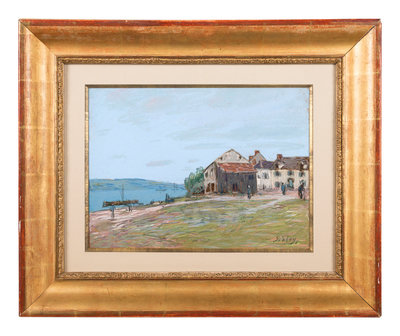Condition Report
Contact Information
Lot 11
Alfred Sisley
(French, 1839-1899)
La Seine à Saint-Mammès, c. 1886-90
Sale 1025 - American & European Art
May 10, 2022
10:00AM CT
Live / Chicago
Own a similar item?
Estimate
$50,000 -
70,000
Price Realized
$87,500
Sold prices are inclusive of Buyer’s Premium
Lot Description
Alfred Sisley
signed Sisley (lower right)
11 1/4 x 15 1/2 inches.
Property from the Collection of Richard D. Simmons, Alexandria, Virginia
(French, 1839-1899)
La Seine à Saint-Mammès, c. 1886-90
pastel on paper
signed Sisley (lower right)
11 1/4 x 15 1/2 inches.
Property from the Collection of Richard D. Simmons, Alexandria, Virginia











